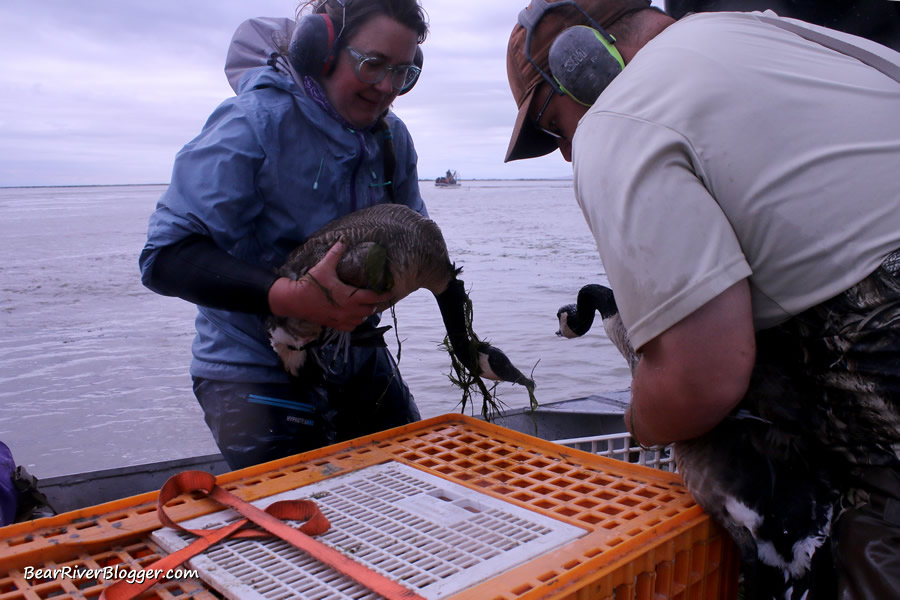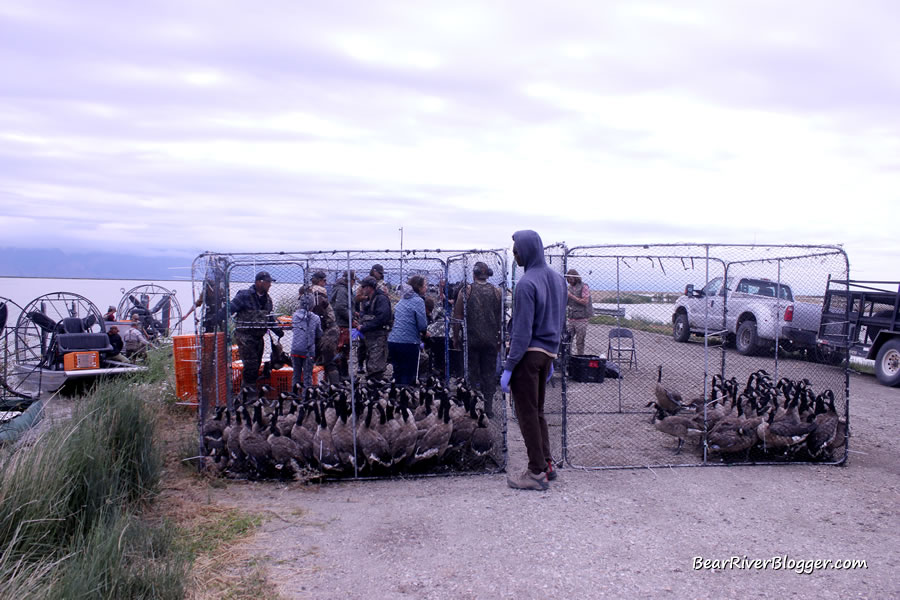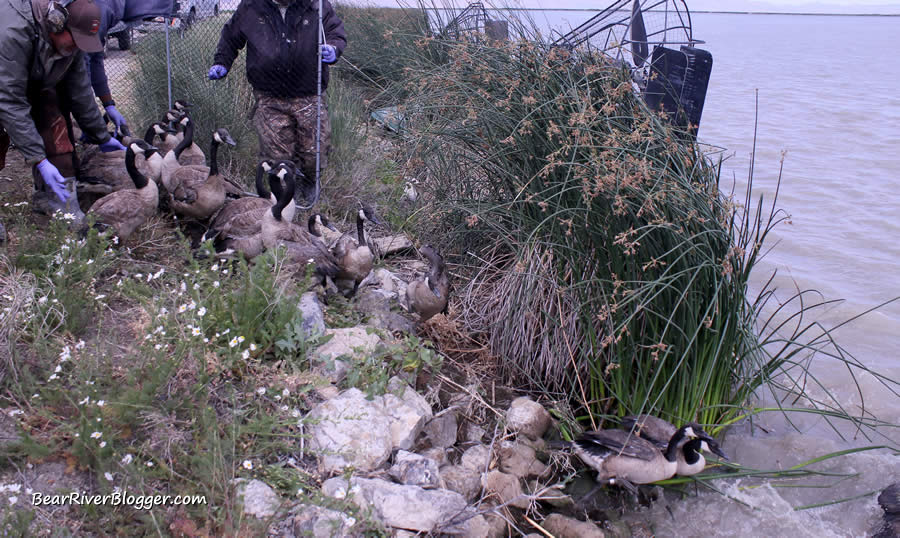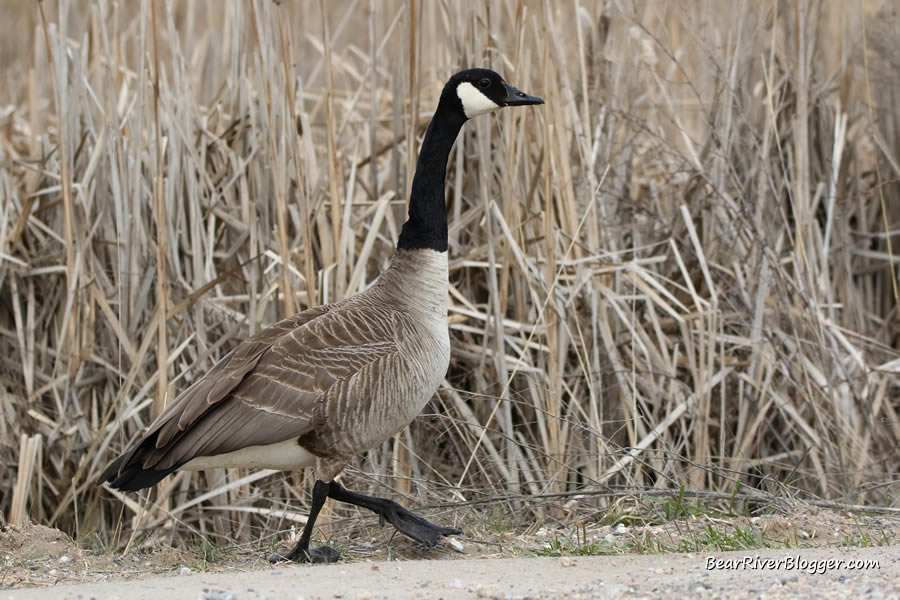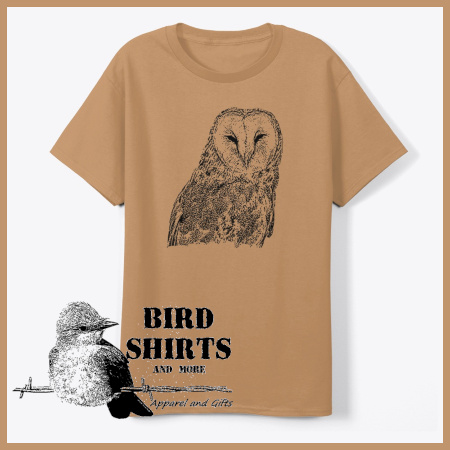There are many things in nature that fascinate me, I mean truly and earnestly grab and hold my attention and admiration to no end.
For example, I am enchanted by the monarch caterpillar and its amazing metamorphosis that somehow turns itself into a beautiful butterfly or how a dragonfly can find and pluck even the tiniest of insects out of the air while on the wing as it darts about on a soft summer breeze.
But as an avid birdwatcher, one that started watching birds as a very young boy several decades ago at Farmington Bay WMA, I could easily make the argument that bird migration is at the top of the list that compels me to get out and enjoy nature every chance I get.
So when the offer to ride along with the Utah Division of Wildlife Resources staff on a goose banding project on the Bear River Migratory Bird Refuge auto tour route presented itself a couple days ago, I naturally had to take full advantage of this rare glimpse of how bird banding actually works.
It gave me an opportunity to record some video for our small but growing YouTube channel of the actual capturing of the geese as well as some of the behind-the-scenes photos I’ll post in an image gallery below at the end of this article.
Not only was I able to ride along on one of the airboats out on the large bird refuge impoundment to help catch hundreds of flightless Canada Geese by hand, each one to be fitted with a leg band and then released, but I was also privileged to interview Rich Hansen, the current manager of the Ogden Bay WMA and waterfowl banding coordinator since 2004 for the Utah Division of Wildlife Resources, to learn more about the goose banding project here in Utah.
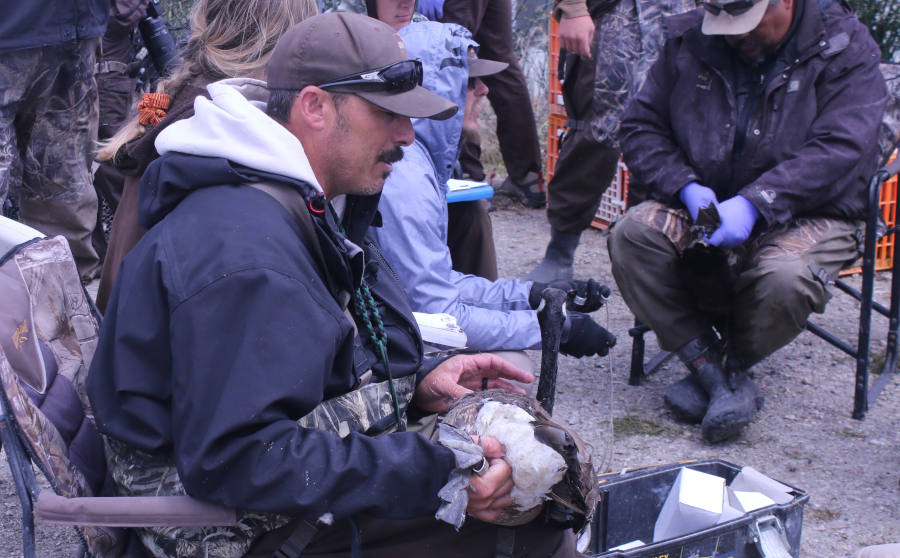
According to Hansen, the Canada goose banding program in Utah began in 1965 and has been continued each and every year since then, accounting for nearly 125,000 Canada geese caught, leg-banded, and released to date.
Trust me, it’s not an easy task to safely catch a wild bird but what makes this particular bird banding program possible and so successful is Canada geese molt their flight feathers each year during the month of June, rendering them flightless for 40-50 days.
During this time, these flightless geese tend to find each other and flock up in large groups in vast open water habitats such as the Bear River Migratory Bird Refuge auto tour route for protection against predators during this vulnerable period of their life.
This offers the Utah DWR a window of opportunity to safely catch, leg band, and promptly release back into the wild several thousand Canada geese statewide each summer with the help of a few airboats and many DWR personnel.
Simply put, each airboat is staffed with a driver, a couple of spotters poised low on the deck to actually catch the flightless geese by hand, and a few large bird crates to transport the geese back to shore where they are sexed, aged, fitted with an aluminum leg band inscribed with a unique identifying number, and then shortly released back into the wetlands together as a large flock.
Once finished, all the data is then sent to the U.S. Geological Survey Bird Banding Laboratory database which contains bird banding information for a variety of bird species from all across the United States and Canada.

When a leg band for one of these Canada geese, for example, is recovered and reported to the Bird Banding Laboratory, the date and location of the recovery are matched up to the banding location and date and over time migration routes as well as mortality and survival rates can be determined when enough bands are recovered and reported.
Hansen mentioned that over the years at least one Canada goose banded here in Utah has been recovered and reported to the Bird Banding Laboratory in each of the lower 48 states as well as up in Saskatchewan and Alberta, Canada.
He further pointed out the banding data does show, however, that most of the Canada geese banded here in Utah do stay west of the Rocky Mountains and mainly keep to Utah, Idaho, Wyoming, and Montana as a general rule.
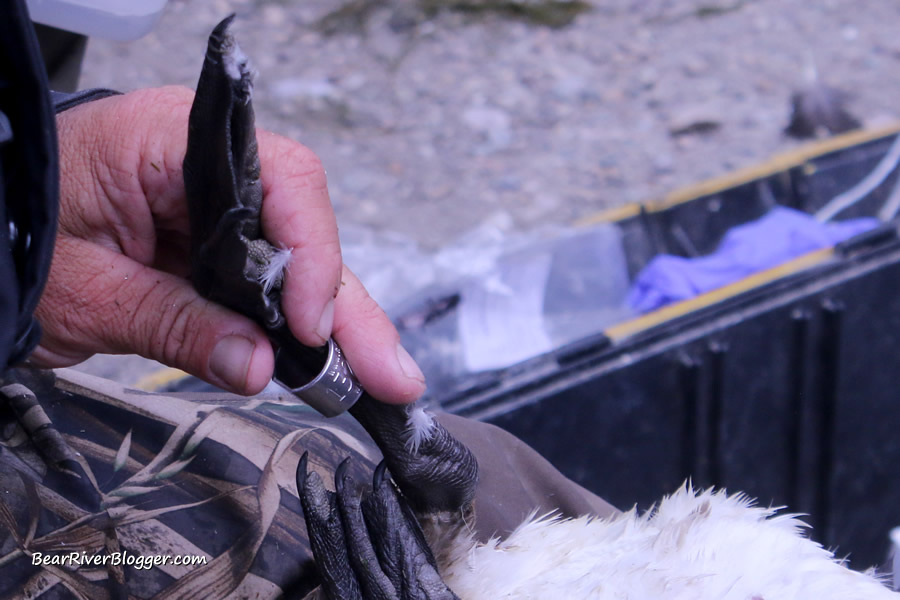
Anyone finding a leg-banded Canada goose, either through hunting, finding a dead goose, or even through photography (I actually spend time photographing Canada geese with leg bands to try and glean the entire band number from the images) is highly encouraged to report the leg band to the Bird Banding Laboratory, noting the location and date of when and where the band was recovered or, in my case, observed and photographed.
Once the Bird Banding Laboratory retrieves the pertinent information about the goose leg band recovery, or any banded wild bird for that matter, from their massive database, they will email you a certificate of appreciation with the original banding data about the bird, including who banded it, when it was banded, and where the bird was originally caught and fitted with its leg band.
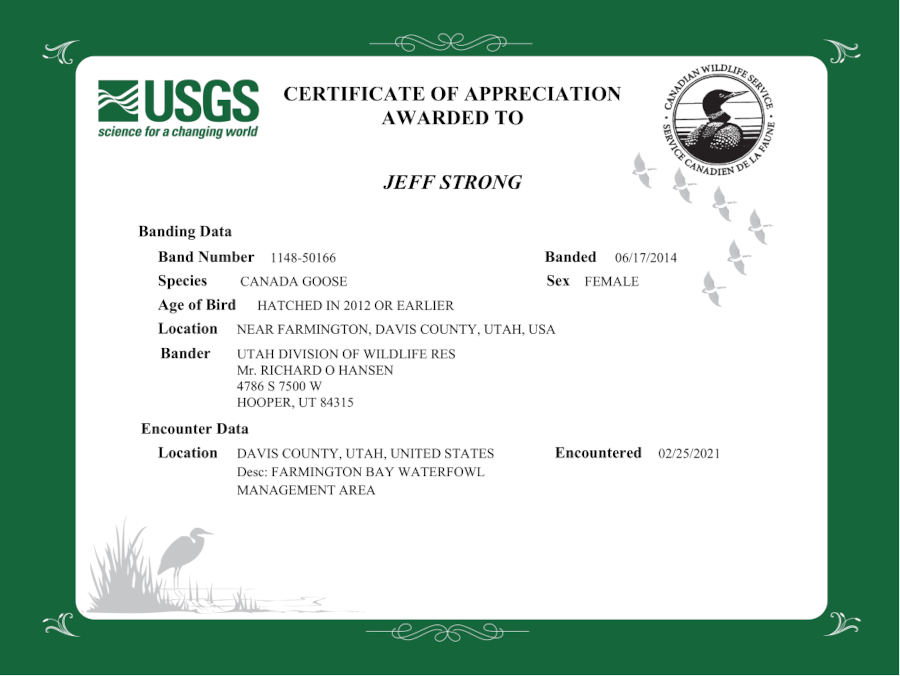
In Utah, the Division of Wildlife Resources bands Canada geese in a variety of locations statewide each summer, including Ogden Bay WMA, Farmington Bay WMA, Bear River Migratory Bird Refuge, Salt Creek WMA, the Bear River Club and other waterfowl hunting clubs on the south end of the Great Salt Lake in northern Utah and Scipio Reservoir, Fish Lake, Johnson Reservoir, and Koosharem Reservoir in southern Utah.
At the end of the day, bird banding has helped unlock some of the mysteries of Canada goose migration with over 5 decades of data to draw from right here in Utah thanks to the annual efforts of the Utah Division of Wildlife Resources and their waterfowl leg banding program.
(Utah DWR Catching Canada Geese via Airboat For Leg Banding. For short nature clips like this one and interesting stories about the natural world around us, check out our Bear River Blogger channel on YouTube for videos and updates from our travels while out in nature.)
When Canada geese are banded and the banding and recovery data are compiled and analyzed over the years, migrations routes as well as potential habitats along the way that might need protection can be learned so these incredible birds have places to feed, rest, and breed throughout the year in North America.
If you are like me, an avid birder that loves birdwatching, I offer you to head on over to our subscribe page and sign up for email notifications for future blog posts like this one where we try to educate and enlighten our readers to get out and enjoy and appreciate nature as much as we do.

